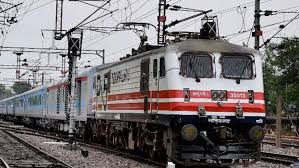IRFC Share: Current Trends and Investment Potential

Introduction
The Indian Railway Finance Corporation (IRFC) has emerged as a significant player in the Indian stock market, especially since its IPO in January 2021. As the financing arm of the Indian Railways, IRFC plays a critical role in funding infrastructure projects, making its shares a topic of keen interest for investors. Understanding the dynamics around IRFC shares is essential for investors looking to capitalize on potential growth in the railways sector, especially as India’s infrastructure develops.
Market Performance
As of October 2023, IRFC shares have shown considerable volatility, reflecting broader market trends and investor sentiment. After witnessing an initial surge post-IPO, the shares experienced fluctuations influenced by both domestic and global economic conditions. Currently, IRFC shares are trading at approximately ₹30, down from its 52-week high of ₹38. Analysts attribute this decline to concerns over the slowdown in economic growth and uncertainties in government spending on infrastructure.
Factors Influencing IRFC Shares
The performance of IRFC shares is primarily influenced by several key factors:
- Government Policies: Being a public sector financial institution, IRFC’s operations are closely tied to government policies regarding railway investments and infrastructure development.
- Economic Indicators: The overall economic environment, including interest rates and inflation, plays an important role in determining investor sentiments towards IRFC shares.
- Railway Development Projects: Announcements of significant railway projects can lead to positive sentiment and potential upward movement in share prices, as these projects require substantial financing.
Investment Potential
Despite the current challenges, many analysts believe that IRFC presents a strong long-term investment opportunity due to the essential nature of its operations. The Indian government’s focus on enhancing railway infrastructure to boost economic development is likely to ensure a steady demand for IRFC’s financing capabilities. Moreover, initiatives such as ‘National Monetization Pipeline’ aim to unlock value from existing assets, giving further impetus to IRFC’s growth prospects.
Conclusion
In conclusion, while IRFC shares face short-term challenges, the long-term outlook remains promising. Investors are advised to remain informed about market conditions and government policies that could impact the railway sector. As infrastructure development becomes a top priority for economic recovery, IRFC’s role is likely to become more prominent, making it a potential candidate for investors looking to diversify their portfolios.









